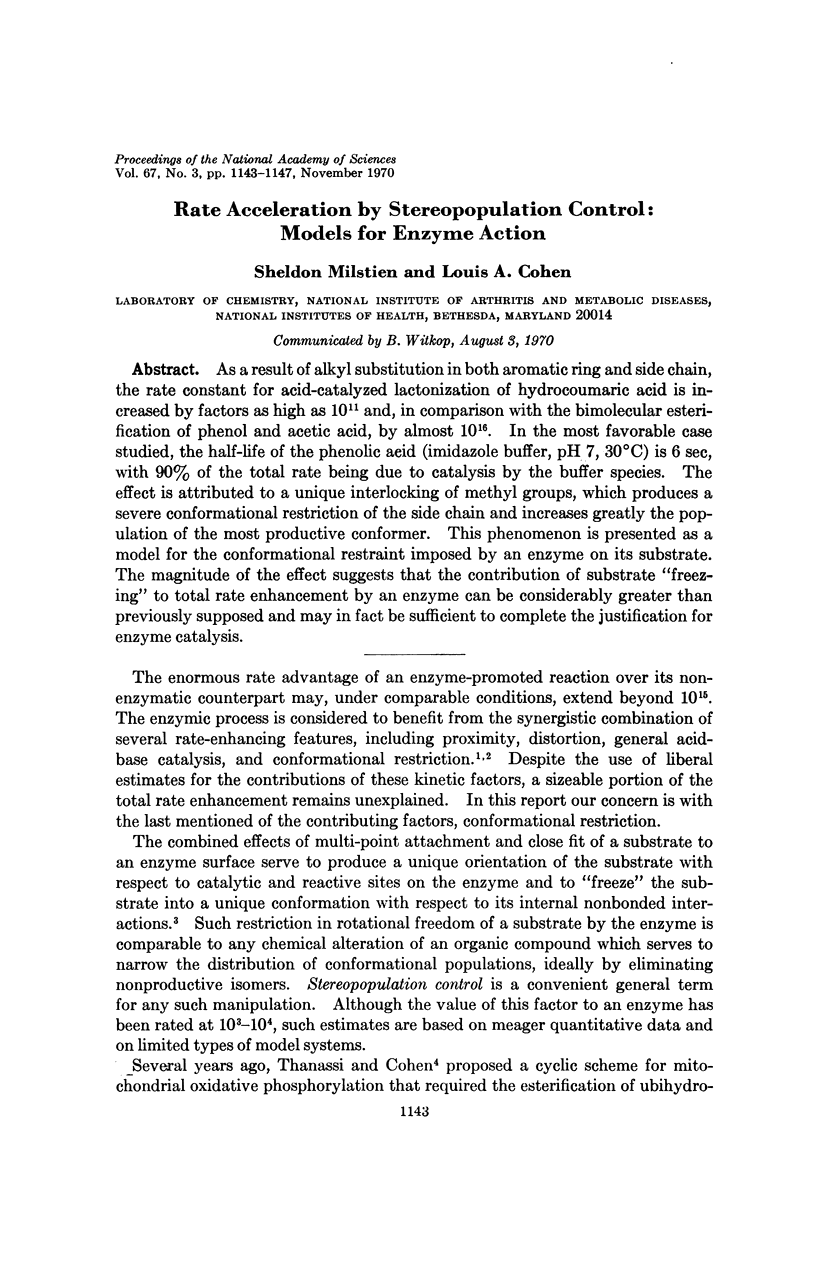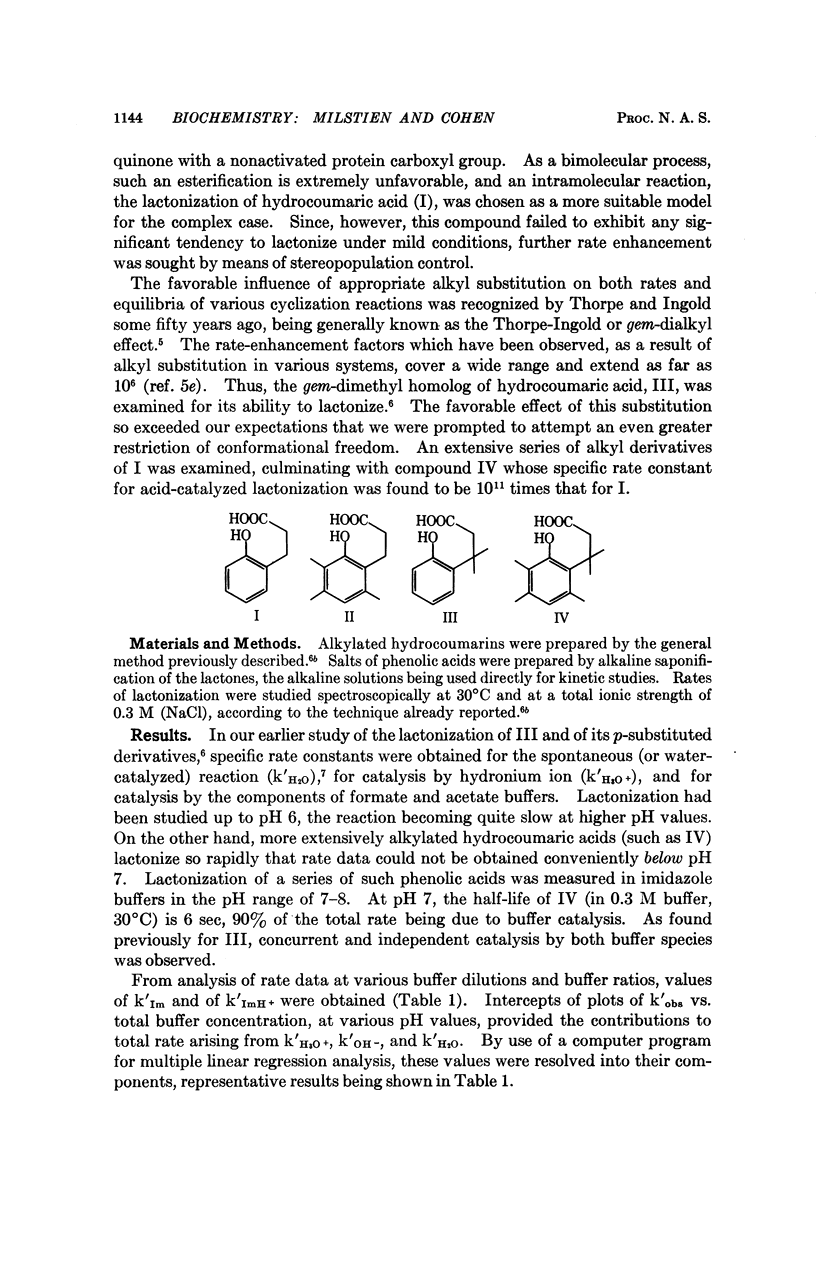Abstract
As a result of alkyl substitution in both aromatic ring and side chain, the rate constant for acid-catalyzed lactonization of hydrocoumaric acid is increased by factors as high as 1011 and, in comparison with the bimolecular esterification of phenol and acetic acid, by almost 1016. In the most favorable case studied, the half-life of the phenolic acid (imidazole buffer, pH 7, 30°C) is 6 sec, with 90% of the total rate being due to catalysis by the buffer species. The effect is attributed to a unique interlocking of methyl groups, which produces a severe conformational restriction of the side chain and increases greatly the population of the most productive conformer. This phenomenon is presented as a model for the conformational restraint imposed by an enzyme on its substrate. The magnitude of the effect suggests that the contribution of substrate „freezing” to total rate enhancement by an enzyme can be considerably greater than previously supposed and may in fact be sufficient to complete the justification for enzyme catalysis.
Full text
PDF




Images in this article
Selected References
These references are in PubMed. This may not be the complete list of references from this article.
- Bruice T. C., Bradbury W. C. The gem effect. II. The influence of 3-mono- and 3,3-disubstitution on the rates of solvolysis of mono-p-bromophenyl glutarate. J Am Chem Soc. 1965 Nov 5;87(21):4846–4850. doi: 10.1021/ja00949a031. [DOI] [PubMed] [Google Scholar]
- Higuchi T., Eberson L., Herd A. K. The intramolecular facilitated hydrolytic rates of methyl-substituted succinanilic acids. J Am Chem Soc. 1966 Aug 20;88(16):3805–3808. doi: 10.1021/ja00968a023. [DOI] [PubMed] [Google Scholar]
- Koshland D. E., Jr, Neet K. E. The catalytic and regulatory properties of enzymes. Annu Rev Biochem. 1968;37:359–410. doi: 10.1146/annurev.bi.37.070168.002043. [DOI] [PubMed] [Google Scholar]
- Storm D. R., Koshland D. E. A source for the special catalytic power of enzymes: orbital steering. Proc Natl Acad Sci U S A. 1970 Jun;66(2):445–452. doi: 10.1073/pnas.66.2.445. [DOI] [PMC free article] [PubMed] [Google Scholar]
- Thanassi J. W., Cohen L. A. The conservation of oxidative energy in phosphate-free systems. Formation of acyl anhydrides via the oxidation of hydroquinone monocarboxylic esters. Biochim Biophys Acta. 1969 Apr 8;172(3):389–398. doi: 10.1016/0005-2728(69)90135-2. [DOI] [PubMed] [Google Scholar]



